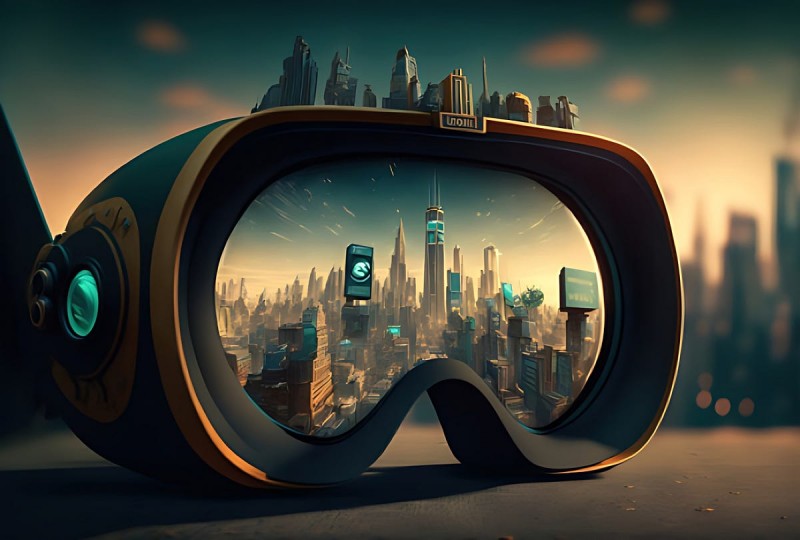
The world of art has witnessed a revolutionary transformation with the advent of Non-Fungible Tokens (NFTs). These unique digital assets have redefined the concept of digital ownership, presenting artists and creators with new opportunities and challenges. This article delves into the fascinating world of NFTs, exploring their impact on the art market, the intersection of technology and art, copyright concerns, environmental implications, and the future of NFTs.
Understanding NFTs
What are NFTs?
NFTs are blockchain-based tokens that represent ownership of a specific digital asset, whether it's a piece of artwork, a music track, a video, or even a virtual real estate. Each NFT is one-of-a-kind and cannot be replicated, making it distinct from cryptocurrencies like Bitcoin or Ethereum, which are fungible and can be exchanged on a one-to-one basis.
How do NFTs work?
NFTs operate on decentralized blockchain networks, primarily on Ethereum. They are created using smart contracts that embed unique information about the digital asset they represent. Blockchain technology ensures the provenance and authenticity of the NFT, providing a transparent and immutable record of ownership.
Why are NFTs revolutionary in the art world?
NFTs have disrupted the traditional art market by enabling artists to tokenize their digital creations and sell them directly to collectors without intermediaries. This direct interaction empowers artists, ensures fair compensation, and allows them to retain control over their work.
NFTs and Digital Ownership
The concept of digital ownership
Digital ownership has been a contentious issue in the internet age, with easy duplication and sharing of digital content challenging the traditional notions of ownership. NFTs introduce the idea of verifiable scarcity, giving digital assets inherent value and ownership rights.
How NFTs redefine digital ownership
NFTs have revolutionized digital ownership by providing a certificate of authenticity and provenance for digital assets. This has made it possible to buy, sell, and trade digital art, creating a new market for creators and collectors alike.
Advantages of NFTs for artists and creators
NFTs offer several advantages for artists and creators. They provide a new stream of revenue through initial sales and subsequent royalties on secondary market transactions. NFTs also foster a direct connection between artists and their audience, encouraging collaboration and community-building.
NFTs in the Art Market
NFTs as a new medium for artists
NFTs have become a new medium for artistic expression, allowing artists to experiment with interactive and dynamic digital art forms that were not possible in traditional media. This has led to the rise of digital art galleries and virtual exhibitions.
Impact on traditional art galleries and auctions
The rise of NFTs has challenged traditional art galleries and auction houses to adapt to the changing landscape. Some have embraced NFTs, while others remain cautious about the uncertainties and challenges they bring.
Challenges and criticisms of NFTs in the art market
Despite their transformative potential, NFTs have faced criticisms, including concerns about art theft, plagiarism, and market speculation. The high energy consumption associated with NFT transactions has also raised environmental concerns.
The Intersection of Technology and Art
NFTs as a form of creative expression
NFTs have provided artists with a unique canvas to explore innovative and boundary-pushing ideas. The digital realm allows for new interactive and multimedia experiences, pushing the boundaries of traditional art forms.
Collaboration and community in the NFT art world
The NFT community has become a hub for collaboration, where artists, collectors, and enthusiasts come together to exchange ideas and support one another. Social media platforms and virtual events have further strengthened this sense of community.
NFTs and the democratization of art
NFTs have democratized art in many ways. They have made art accessible to a global audience, breaking down geographical barriers and promoting diversity in the art world. Emerging artists can find their niche and gain recognition through NFT platforms.
NFTs and Copyright Issues
Intellectual property and NFTs
The digital nature of NFTs has raised concerns about intellectual property rights. Artists must consider copyright and licensing issues to protect their work from unauthorized use.
Addressing copyright challenges in the NFT space
The NFT community is actively discussing and implementing mechanisms to address copyright concerns. Smart contracts can be designed to ensure artists receive royalties for secondary sales, safeguarding their long-term interests.
Environmental Concerns
The carbon footprint of NFTs
The energy-intensive process of minting NFTs has raised concerns about their environmental impact. Critics argue that NFTs contribute to carbon emissions and exacerbate the climate crisis.
Green initiatives and sustainable NFT practices
Efforts are underway to develop more eco-friendly NFT practices. Some blockchain networks are exploring solutions like proof-of-stake to reduce energy consumption, and artists are offsetting their carbon footprint through sustainable initiatives.
Future of NFTs in the Art World
Potential developments and trends
The future of NFTs holds exciting possibilities. Integration with virtual and augmented reality could open up new dimensions for immersive digital art experiences. Cross-chain compatibility may also expand the accessibility and interoperability of NFTs.
NFTs beyond the art world
NFTs are not limited to the art world. They have applications in gaming, virtual real estate, collectibles, and more. As blockchain technology advances, NFTs are expected to revolutionize various industries. NFTs have redefined digital ownership and transformed the art world. These unique tokens have empowered artists, enabled direct engagement with collectors, and sparked new forms of creative expression. While facing challenges, the potential for NFTs to democratize art and drive technological innovation is promising.
Apple App Store to level the security patch for the users
Google to Fuel up the Robots for daily life durabilities